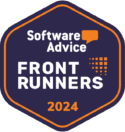SafetyCulture (formerly iAuditor) Requirements Management Software
SafetyCulture (iAuditor)



- Free Version: Available for teams of up to 10
- Pricing: Premium plan $24/month (with a free 30-day trial period)
- Platforms supported: Available on mobile app (iOS and Android) or a web-based software
Why use SafetyCulture?
SafetyCulture is a requirements management software that offers a range of features to help businesses streamline their processes and ensure compliance with safety regulations. With SafetyCulture, companies can easily create and manage inspection checklists, conduct real-time audits, and track corrective actions. It also provides a centralized platform for businesses to monitor and improve product development processes.
Features:
- Conduct internal audits using pre-made checklists from the Public Library
- Create workflows to improve the requirements gathering and management process
- Automate scheduling of inspections and audits
- Assign action items and monitor until completion
- Integrate with other leading management applications
Why use SpiraTeam?
SpiraTeam is an application lifecycle management tool that handles various aspects of the development process, including requirements, test cases, codes, and implementation. It provides a central dashboard for team collaboration and automated software testing.
Features:
- Real-time chat features
- Project documentation
- Integrations with 3rd party management platforms
- Customized workflows
- Free Version: None
- Pricing: Starts at $158.99 per month for 3 users (with a free 30-day trial)
- Platforms supported: Web, Desktop
Why use Modern Requirements?
Modern Requirements offer many features for managing product requirements, such as sharing documents, implementing work breakdown structures, and assigning requirements to tasks. It encourages collaboration and communication between managers and team members. Team members can notify managers when they meet requirements and complete project phases. The tool also has traceability features for improving accountability and minimizing defects.
Features:
- Customized reports
- Product lifecycle with live traceability
- Traceability matrices to identify interdependencies and requirements gaps
- Real-time collaboration
- Free Version: None
- Pricing: Custom pricing (with a free 30-day trial)
- Platforms supported: Web
Why use Visure?
Visure offers a comprehensive solution for requirements, risk, and test management. It’s a valuable tool for teams working on complex products, systems, and software requiring traceability from conception to testing, deployment, and standard certification compliance. It also supports different management styles, such as Agile and SCRUM management.
Features:
- Requirement tracking
- Document versioning
- End-to-end traceability of requirements
- Report generation
- Free Version: None
- Pricing: Custom pricing (with a free 30-day trial)
- Platforms supported: Web, Desktop
Why use Jama Connect?
Jama Software offers a platform for requirements, risk, and test management. Through Jama Connect and specialized services, teams working on complex products, systems, and software enhance efficiency, improve quality, decrease rework, and streamline compliance efforts.
Features:
- Instant email alerts
- Supports multiple engineering disciplines and methodologies
- Live traceability of requirements and processes
- Visibility and compliance reporting
- Free Version: None
- Pricing: Custom pricing (with a free 30-day trial)
- Platforms supported: Web, Desktop
Why use Xebrio?
Xebrio is a requirements management ecosystem that supports the entire project development lifecycle, from requirements to deployment. It enables real-time collaboration among stakeholders and visually tracks requirement changes, linking them to tasks, bugs, test cases, and milestones for traceability.
Features:
- Project management and requirements management
- Requirements versioning
- Requirements approval templates
- Document collaboration
- Free Version: None
- Pricing: $5/user/month (with a free 14-day trial)
- Platforms supported: Web, Desktop
Why use Wrike?
Wrike is a cloud-based project and task management software that make requirements gathering easier and more efficient. Users can collaborate on project requirements with stakeholders like customers, engineers, product managers, and designers. Requirements can be broken down into parts for better comprehension by all parties involved in the project.
Features:
- Real-time updates to any changes
- Automated approval forms
- Activity tracking and dashboard
- Requirements categorization
- Free Version: Yes
- Pricing: $9.80/user/month, billed annually (with a free 14-day trial)
- Platforms supported: Web, Desktop, Android, and iOS
Why use IRIS Intelligence?
IRIS Intelligence is a platform that facilitates efficient and organized management of company requirements. Users can track, manage, evaluate, and analyze requirements from creation to implementation. It equips organizations with the necessary tools to establish a comprehensive process for requirement management across various teams, departments, or projects.
Features:
- Custom reporting
- Portfolio slices to view portfolio data
- Automated email reminders
- AI technology to parse and understand unstructured data
- Free Version: None
- Pricing: Custom pricing
- Platforms supported: Web, Desktop
Why use Accompa?
Accompa is a platform that allows organizations to create, analyze, track, and manage requirements throughout the project lifecycle. It offers users a suite of cloud-based tools for creating and managing requirements, including version control and traceability. Accompa also enables teams to collaborate in real-time on necessary documents and ensures that all stakeholders can access the most current information.
Features:
- Automatic tracking of requirements
- Change history tracking
- Automatic email alerts
- Central repository for requirement management
- Free Version: Yes
- Pricing: Starts at $199/month for up to 5 users (with a free 30-day trial)
- Platforms supported: Web
Why use ReqView?
ReqView is a cloud-based requirements management tool that helps teams manage product requirements, specifications, and related documentation throughout the development lifecycle. It provides a range of features to help teams define, analyze, and trace their requirements, collaborate, and communicate effectively.
Features:
- Requirements status tracking
- Prioritization of requirements
- Integration with 3rd party requirements management platform
- Requirement tracking and updates
- Free Version: Yes, but with limited features
- Pricing: €390 ($432)/year/user (with a free 14-day trial)
- Platforms supported: Web, Desktop
What is a Requirements Management Software?
Requirements management software is a tool businesses use to manage and track project or product development requirements effectively. It allows teams to define, document, and prioritize requirements, track changes and ensure that all stakeholders are aligned throughout the development process. This software is crucial for businesses that want to streamline their requirements gathering and management process, improve communication and collaboration among team members, and ultimately deliver high-quality products or services that meet customer needs.
Benefits
Some of the benefits of using requirements management software include the following:
- Improves communication and collaboration – It ensures that everyone involved in the project is on the same page and reduces the risk of miscommunication or missed requirements.
- Ensures traceability and accountability throughout the project lifecycle – It allows businesses to track the progress of each requirement, from its initial gathering to its implementation and validation, making it easier to identify any gaps or inconsistencies.
- Enables businesses to prioritize and manage requirements effectively – It provides features such as requirement prioritization, dependencies, and impact analysis, which help companies to make informed decisions about which requirements to focus on and how they may affect other aspects of the project.
- Offers better visibility and reporting capabilities – It provides real-time dashboards, reports, and analytics that help businesses monitor their requirements’ progress, identify bottlenecks, and make data-driven decisions.
Key Features
Here are some key features to look for in a requirements management tool:
- Support for different development methodologies
- Hierarchical organization
- Collaboration features
- Integration with other tools or systems
- Security and permissions
Choosing the Best Requirements Management Software
To help you find the most suitable requirements management software for your business, we have created a table that compares features like free versions, pricing, and mobile app functionality:
| Requirements Management Software | Free Version | Paid Plan | Mobile App |
| SafetyCulture | Yes | $24/user/month* | Yes |
| SpiraTeam | None | $144.99/month for 3 users | No |
| Modern Requirements | None | Custom pricing | None |
| Visure | None | Custom pricing | None |
| Jama Connect | None | Custom pricing | None |
| Xebrio | None | $5/month/user | None |
| Wrike | Yes | $9.80/user/month* | Yes |
| IRIS Intelligence | None | Custom pricing | None |
| Accompa | Yes | $199/month for up to 5 users | None |
| ReqView | None | €390 ($432)/year/user | None |
* billed annually









